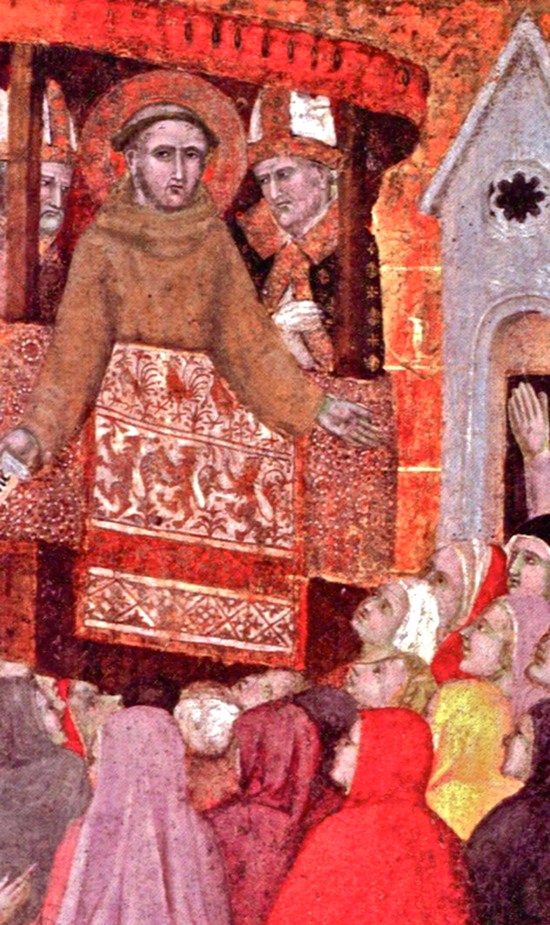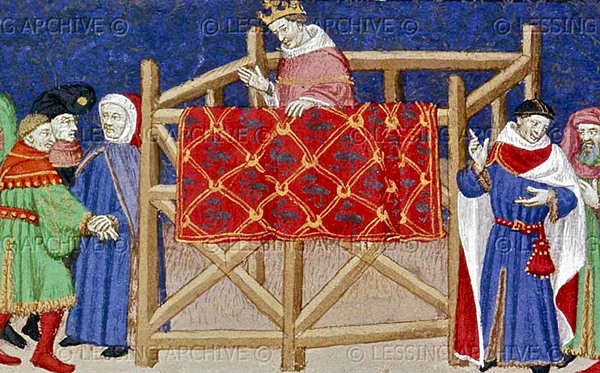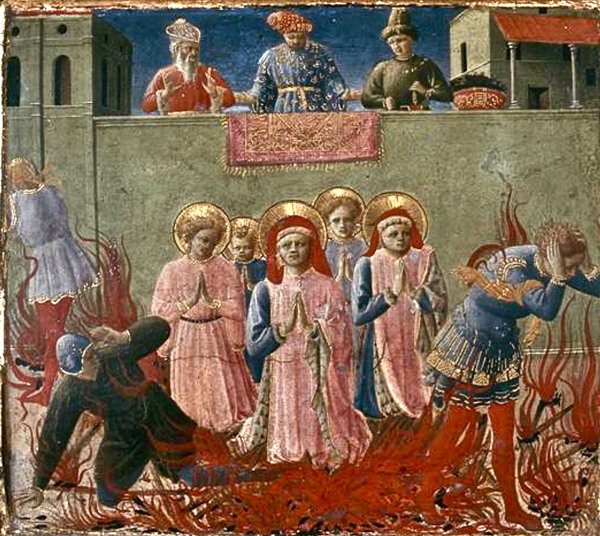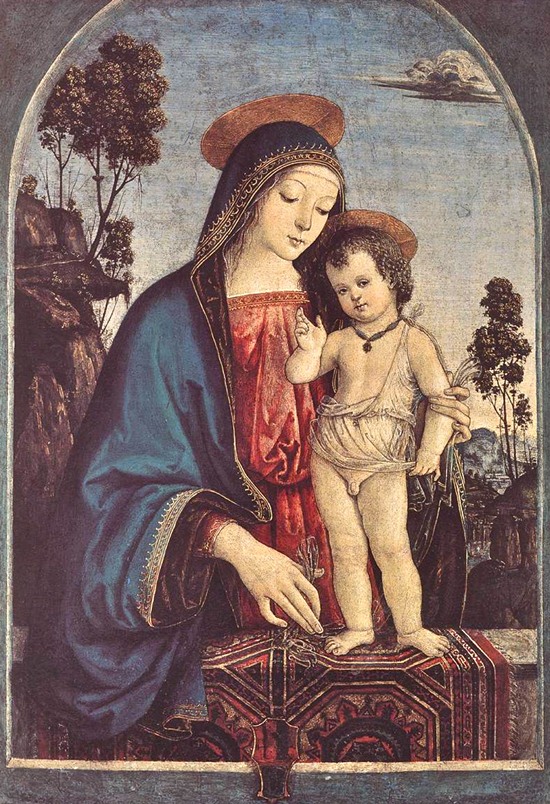Interesting theory Yohann!
You are right, their small-, sometimes square format and their main apparent use for windowsill decoration could support your theory that at least some of these small "rugs" with simplified pattern, were embroideries.

Velvets and brocades are plentiful in old masters paintings (much more frequent than rugs actually) and so were silk satin textiles and (obvious) embroideries. Many could have been woven in Europe (Venice, Lucca, Palermo etc..)
Could the following Renaissance paintings, FIG 1, FIG 2, FIG 3 also feature embroideries? I am a complete ignoramus in this field, but Marla Mallet, if she reads us, could perhaps give us her expert opinion.

FIG 1: I. da Viterbio, 1393,
St Francis preaching.
Porziunco la.

FIG 2:Anonymous. 1425-1440. British Library.
(Note the walking gooses. Hardly fitting for one of our modern Presidents (with a few exceptions of course) but apparently perfectly OK for a Renaissance King.)

FIG 3:Fra Angelico, 1420-1430, St Cosma & St Damiano on the pyre, Annalena altarpiece .
Besides, the analogy between your Rippon Boswell
Caucasian embroidery and Del Cossa’s rug will win you the devotion of the strong and virulent sect of Caucasomaniacs, here on Turkotek, given the rarity of fourth- or fifteenth century paintings featuring a rug which could plausibly be ascribed to Caucasus.
Arguably, the following one, by Pinturicchio, could be such a rare bird too. (it is, apparently, a rug, but please note the strange fringes )
 FIG 4. Pinturicchio, 1475-1480, Virgin and Child, National Gallery, London.
FIG 4. Pinturicchio, 1475-1480, Virgin and Child, National Gallery, London.
However Yohann, to
really achieve sainthood- or prophet status here on Turkotek, you will have to bring us a painting featuring a credible fourteenth century
Turkmen rug or, better still, l an extant one

!
Best regards,
Pierre